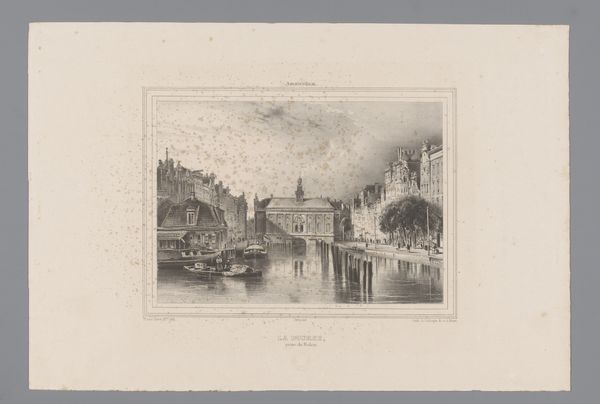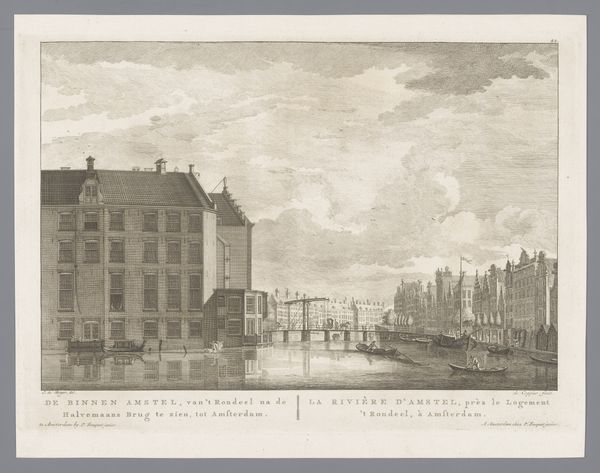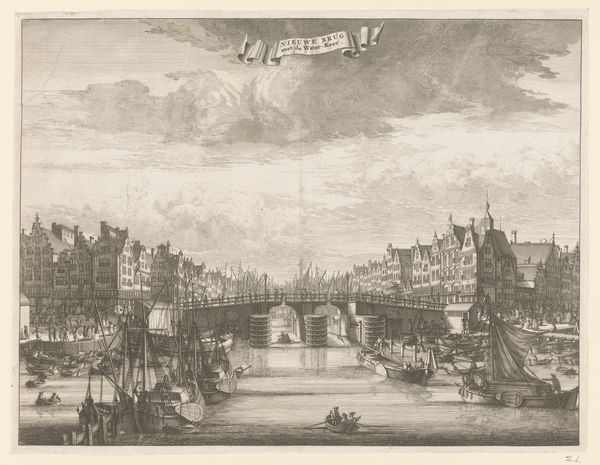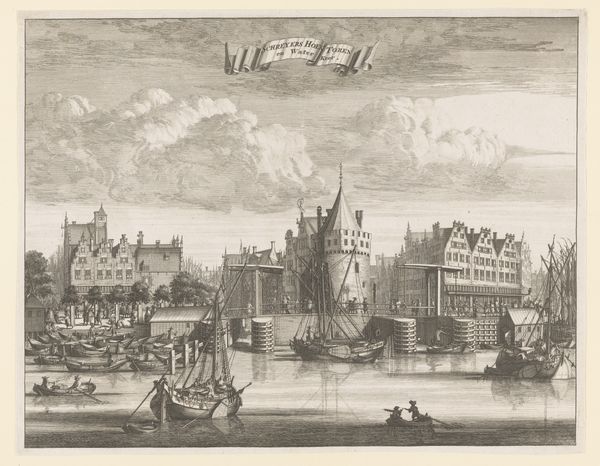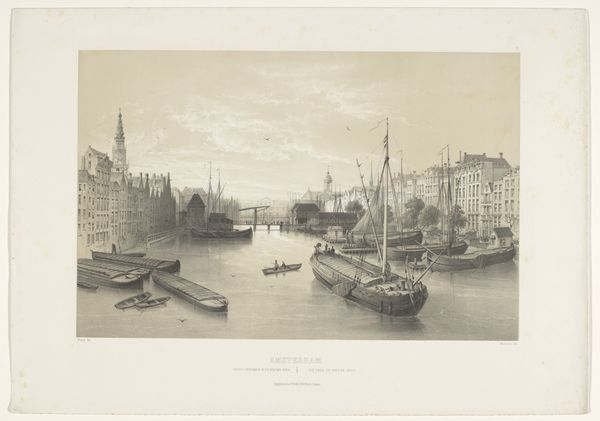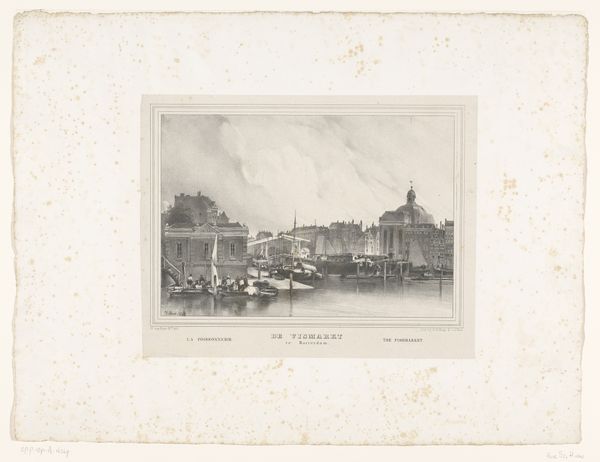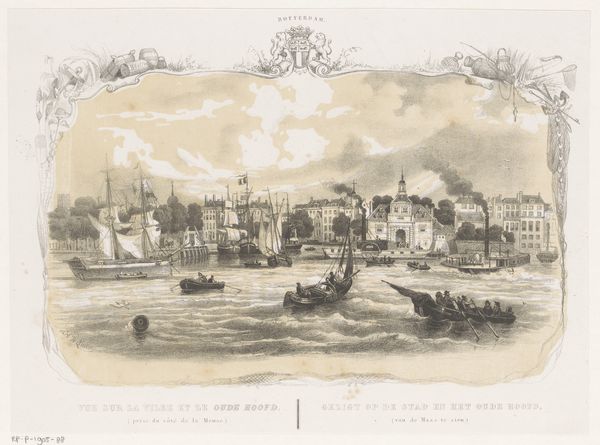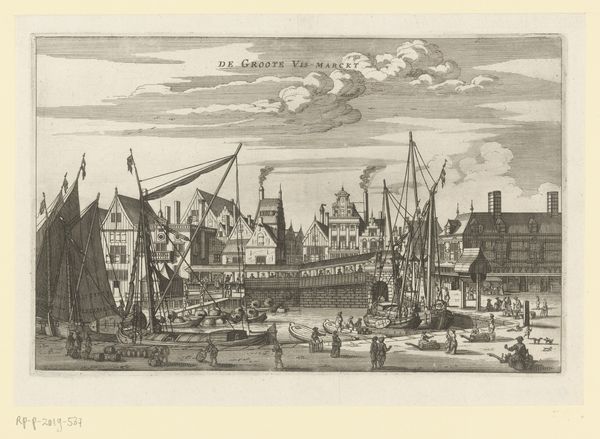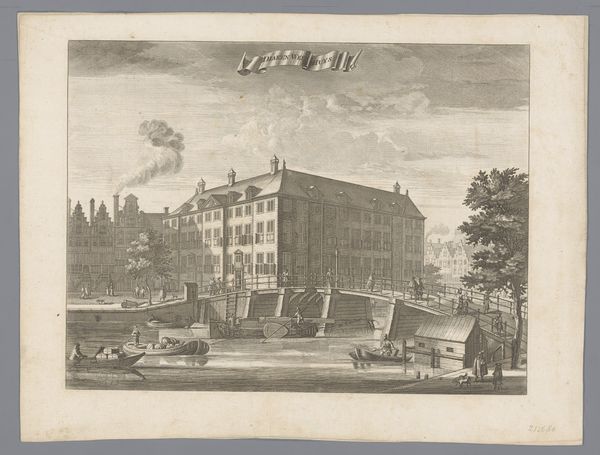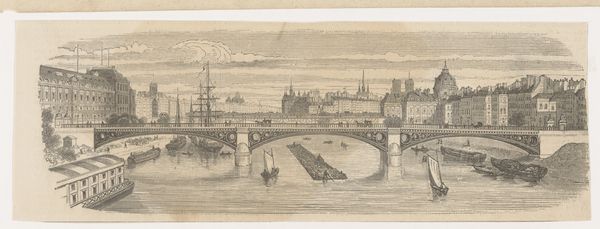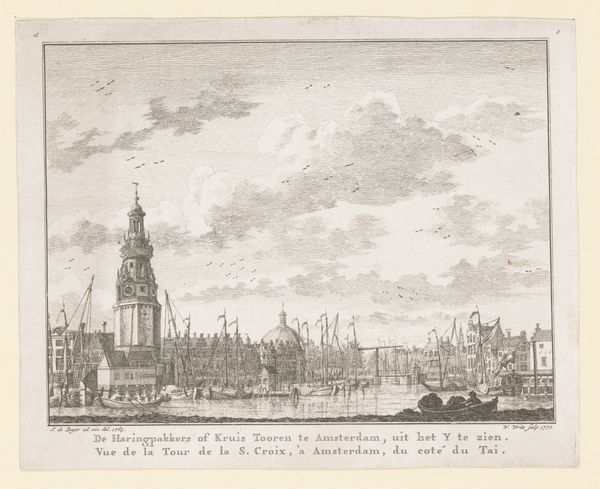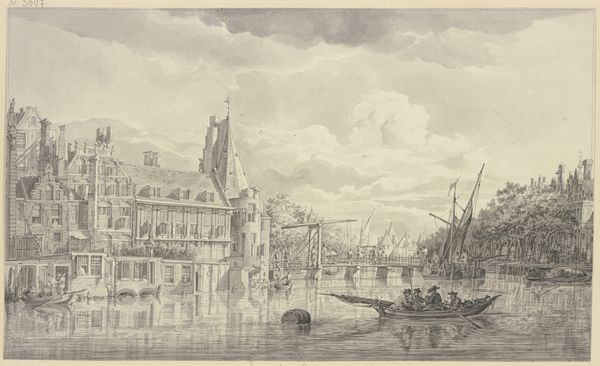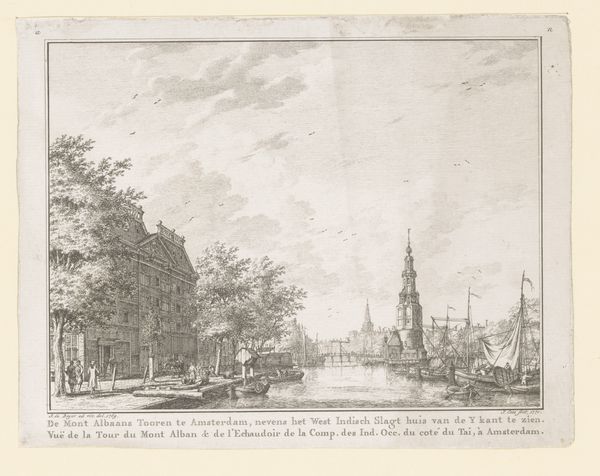
print, engraving
# print
#
landscape
#
romanticism
#
cityscape
#
genre-painting
#
engraving
Dimensions: height 225 mm, width 305 mm
Copyright: Rijks Museum: Open Domain
Editor: Here we have Hendrik Wilhelmus Last's "Gezicht op Rotterdam," a print made sometime between 1827 and 1873. The level of detail is incredible, considering it's an engraving. It feels like a carefully constructed image, almost idealized. What stands out to you in this piece? Curator: Well, it’s fascinating how this print participates in constructing a specific image of Rotterdam. Think about the "Gezicht," the "View." This wasn't just a neutral depiction; it was actively shaping how people perceived the city, particularly as urban spaces were changing rapidly. The print romanticizes Rotterdam at a time of massive socio-economic transformation. Notice the delicate frame; that gives it value for sale to tourists or wealthy residents who want a nostalgic snapshot. Editor: So, it's like early propaganda, selling a particular idea of the city? Curator: Precisely. And propaganda isn't always negative, it served to emphasize particular narratives about civic pride. Consider what is emphasized—orderly waterways, neoclassical buildings, figures engaged in commerce and leisure. This reinforces the idea of Rotterdam as a prosperous, civilised hub. How do the architectural details of the bridge and the surrounding buildings influence your impression? Editor: They give a sense of grandeur and permanence, but almost a slightly artificial grandeur, now that you mention the framing. Curator: Yes. The print doesn't show any industry which, in the 19th century, would surely have been a significant part of the city's landscape. So the print is creating a selected, consumable reality. Editor: It’s so interesting to think about art as an active player in shaping public perception rather than just a passive reflection. I’ll never look at cityscapes the same way again! Curator: Exactly. Always consider the socio-political backdrop, and whose interests are being served in their production.
Comments
No comments
Be the first to comment and join the conversation on the ultimate creative platform.
